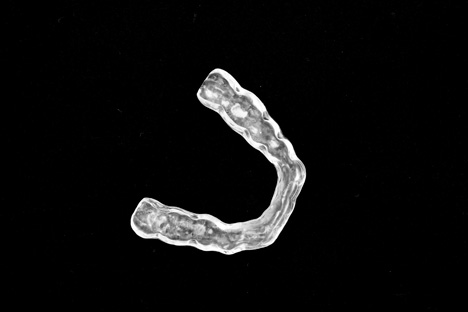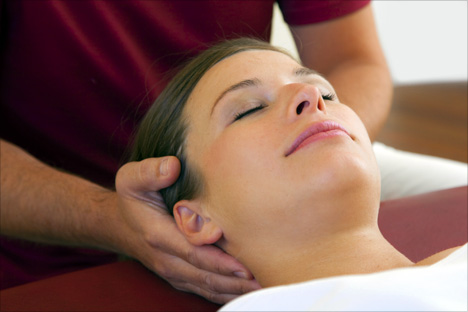- Conservative therapy
- What is the treatment for temporomandibular disorders?
It is estimated that today there are more than 50 types of treatment that are mainly based on beliefs and personal opinions and not on scientific evidence.
Currently, scientific evidence shows that the treatment of temporomandibular disorders should be multidisciplinary and less invasive as possible and, wherever possible, not irreversible.
Treatment options are: behavior management, occlusal splints, physical therapy, pharmacotherapy, psychotherapy and surgery. It is often the combination of several therapies that contributes to the relief of symptoms.
It's necessary to assess the problem and tackle it from different points of view.
Patients with temporomandibular disorders should be acquiring behaviors and lifestyles that can control the symptoms. For instance, following a behavior re-education/management: by avoiding chewy foods that cause an overload of the masticatory system (meat or pizza) and direct the diet to more tender and easily chewable foods and by avoiding all substances that cause excessive excitability i.e. coffee, tea, tobacco, alcohol, and finally avoiding emotional stress and controlling anxiety.
The occlusion splints has been a milestone in the treatment of temporomandibular disorders. They are patient-customized (so the splint bought in pharmacies cannot be used) and are a kind of mouth guard, a lot thinner, which are placed on the upper or lower arch.
This raises chewing and provides the correct contact between the dental arches and mainly act on the muscles preventing bruxism, and avoid the hyperactivity of the masticatory muscles and reduce the overload on the temporomandibular joints.


Physiotherapy is essential if the main problems are pain and hyperactivity of the masticatory muscles. It is also useful to stretch the joints that are hypomobile for an intra-articular problem ( disc displacement and inflammation).
Physiotherapy plays an important role in recovery after surgery of the temporomandibular joint. The physical therapist focuses not only on the cranio-mandibular system but also on the neck, shoulders and posture.
The role of pharmacotherapy in temporomandibular disorders is mainly aimed at controlling the pain. They can be useful medication that aim at reducing the pain and inflammation at the peripheral level ( non-steroidal anti-inflammatory drugs) or at the level of the central nervous system when pain becomes chronic. Other drugs may be useful for controlling muscle hyperactivity (muscle relaxants or benzodiazepines).
Another therapeutic option used to control muscle overactivity, bruxism and pain is the infiltration of the masticatory muscles with botulinum toxin.
Psychotherapy along with other relaxation techniques is useful for patients who cannot control their anxiety and stress.

